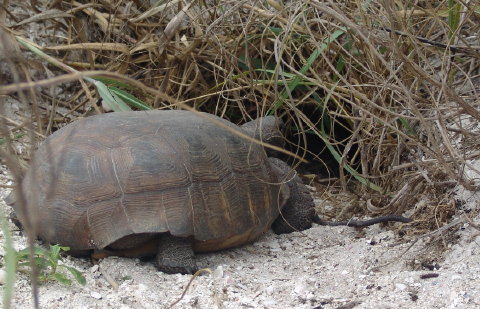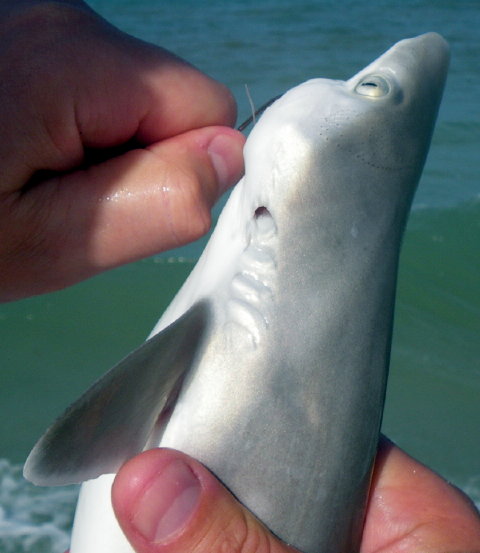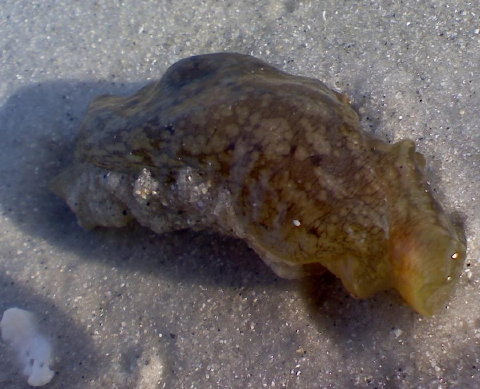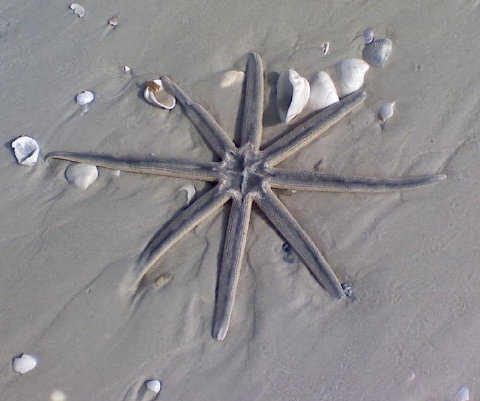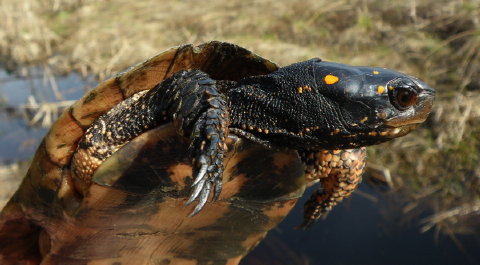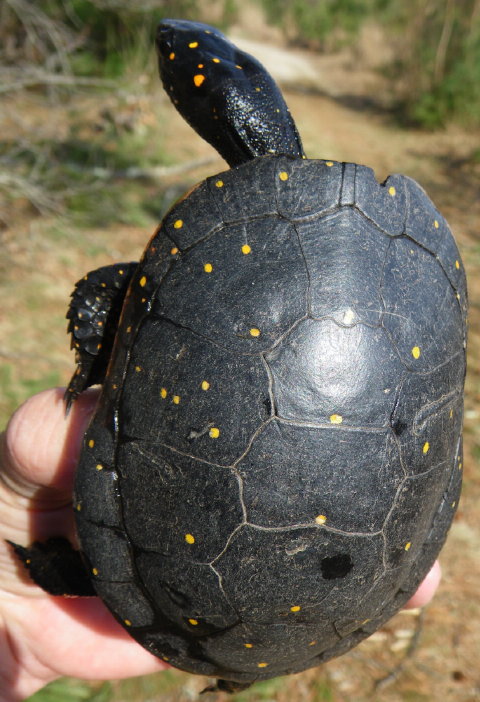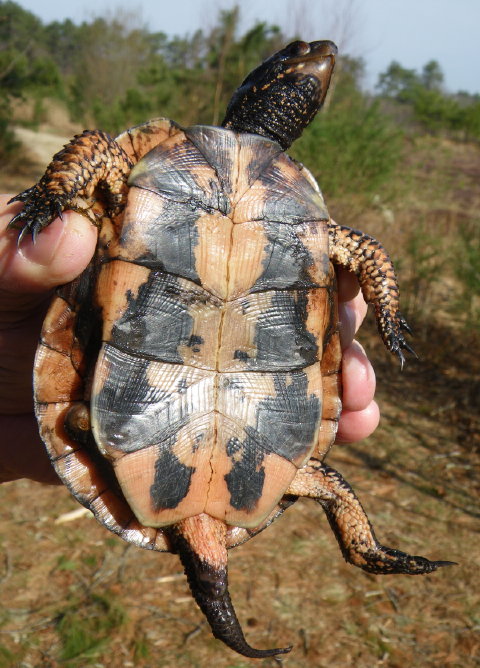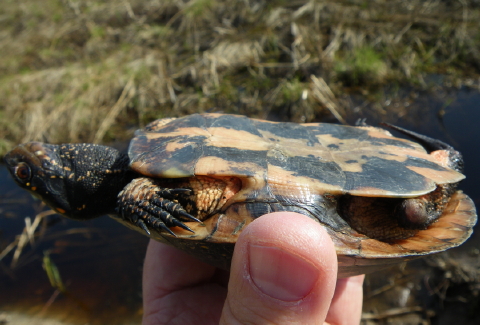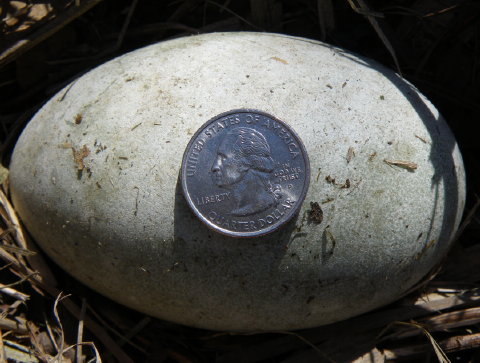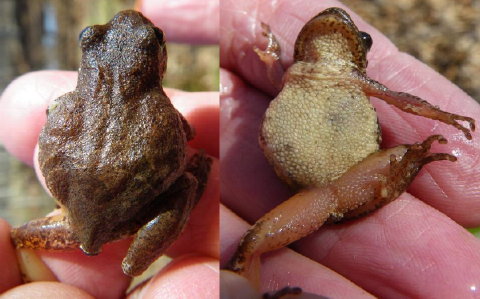Feisty Female Gopher Tortoise (Gopherus polyphemus)
Mating season for gopher tortoises (Gopherus polyphemus) in Florida comes each April and May. With rising temperatures and bright sunshine today, the entire tortoise community on the Gulf Coast of Naples, Florida went out looking for action.Â
Gopher Tortoise near Ritz Carlton Beach Resort in Naples
These gopher tortoises on Vanderbilt Beach occupy the most expensive habitat, inch for inch, of any turtles in the world with large burrows tunneled in front of five-star resorts and billion dollar condominium high rises. They excavate openings to capture sweet Gulf breezes that ventilate their underground homes that directly overlook brightly decorated swimming cabañas and beach umbrellas for elite jet-set tourists from around the globe. These critters must understand, and perhaps they even invented, the real estate phrase: “location, location, location!”
Nearly 15-Inch Long Female Gopher Tortoise
While we’ve been conditioned to think of tortoises as plodding animals, steady but slow as the fable goes, this illusion would be crushed by the reality of a gopher tortoise on the hunt for a mating companion. Turtle Journal encountered a very large and extremely feisty female tortoise this morning, strutting her feminity among the burrows in the dunes wedged between the Ritz Carlton Naples Beach Resort and the Gulf of Mexico. This turtle hissed at the unintended intrusion, kicked sand and stomped through the high grass and brush like a rhinoceros on steriods. Later in the heat of the day, other mature tortoises were observed cavorting in the sandy dunes.
Vanderbilt Beach Gopher Tortoise at Entrance to Burrow
With all this frenetic hormonal activity today, the start of nesting season can only be a couple of weeks off, as female tortoises begin to bury their eggs in mounds of warm sand near the entrance to their burrows for incubation under the Florida sun.



